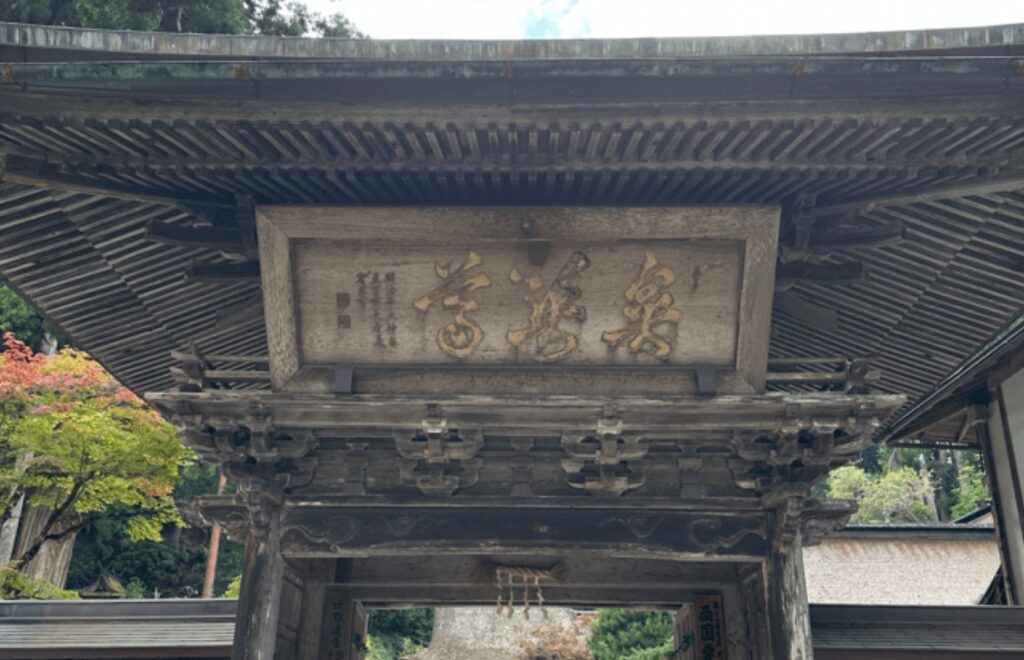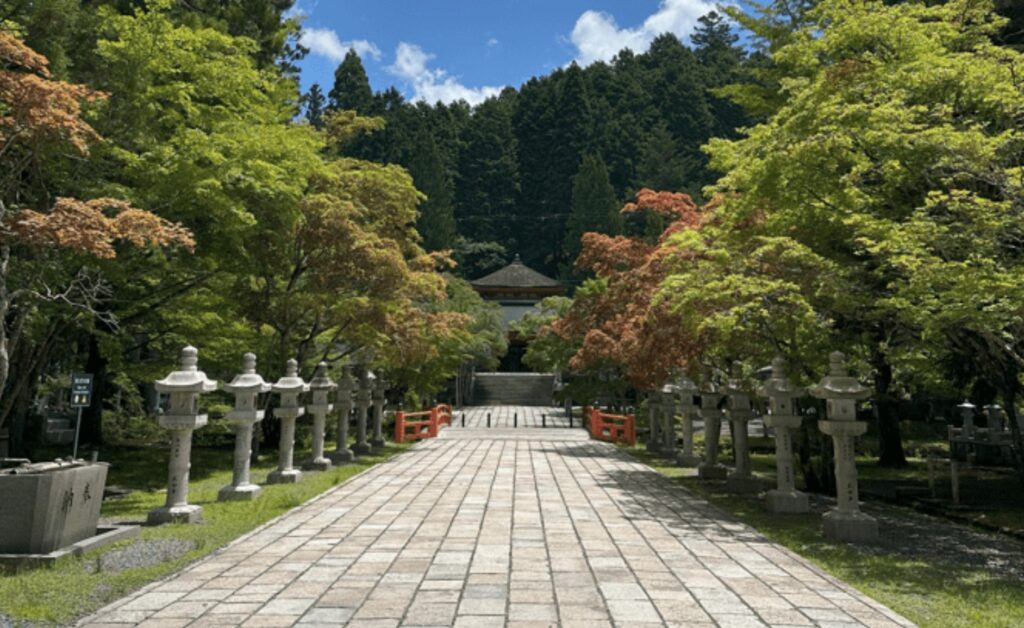Meditation for Sleep with Buddhist Chants: My Experience with the GASSHO App

To the Me Who’s Been Struggling to Sleep More Often Lately
There were nights when I simply couldn’t fall asleep, no matter how tired I was. My thoughts kept looping—what’s happening tomorrow, what did I forget—and my mind would stay wide awake. What helped me shift away from those restless nights was a bedtime ritual of meditation for sleep using Buddhist chants, discovered through a calming app called GASSHO.

Having a stable bedtime routine helped me create a peaceful rhythm before bed, slowly bringing order back to my sleepless nights.
When I was younger, I could fall asleep within minutes. But lately, it feels like I’ve been stuck in a state of mild insomnia, with my thoughts racing the moment I lie down. “Did I reply to that email?” “Is tomorrow’s schedule okay?” One concern leads to another, and before I know it, my brain won’t stop spinning.
And the more I think, “I need to sleep or tomorrow will be ruined,” the more sleep slips away. This contradiction had been a constant struggle.
Practicing Sleep—Meditation as a Nighttime Ritual
Falling asleep should be natural, right? But at some point, I started “trying hard” to sleep.
Too much screen time.
Too much thinking during the day.
A flood of information.
All of these modern distractions may be quietly stealing our ability to simply be still at night. That’s why creating a quiet space before bed—what I’ve come to call my meditation for sleep or bedtime ritual—has become essential for me.
That’s when I discovered the GASSHO meditation app.
Discovering GASSHO: Choosing the Sutra

GASSHO offers a variety of sound-based content rooted in Buddhist meditation. Among them, what moved me most was the audio of solemn sutra chanting.
At first, I hesitated—“A sutra?”—but when I listened, it felt nothing like typical sleep music. The warmth and resonance of the human voice had a depth that gently embraced my heart.
It felt like drifting at the bottom of the sea.
I thought, why not entrust my pre-sleep mind to this sound? So I began a 7-day experiment—a quiet sleep preparation habit—and quickly realized the importance of making relaxation a routine.
Subtle Shifts Over 7 Days
GASSHO offers a guided meditation experience that feels accessible even to beginners, with simple steps anyone can follow, even beginners.
Here’s my nightly GASSHO routine:
- Turn off notifications
- Play the sutra audio
- Use headphones or a speaker
- Close your eyes and take deep breaths for 5–10 minutes
- Focus solely on listening
At first, I doubted it would work. I even caught myself checking social media out of habit.
But by the fourth night, something shifted. The sound waves began to calm my mind, helping the noise in my head gradually fade away.
“Thinking won’t help. Let’s just listen.”
That mindset marked the start of a change. Meditation for sleep truly began to transform my nights.
The Feeling of Surrendering to Sound
We often associate meditation with concentration or “clearing the mind,” but my experience with GASSHO was the opposite.
When I let go and simply surrendered to the sound, it felt like the rhythm of the chanting was syncing with my breath and soaking into my body.
Instead of “thinking,” I was simply feeling.
That shift is, I believe, the essence of meditation for sleep—the quiet guidance that gently leads us toward rest.
Is Phone-Based Meditation Counterproductive? What Science and Experience Show
I used to think, “Isn’t using a smartphone for meditation defeating the purpose?”
But GASSHO is an app you use only to fall asleep.
If you turn off notifications and avoid other apps, the smartphone can actually become a powerful tool to support your sleep.
In fact, research data supports the effectiveness of guided meditation and sleep aid apps. A 2024 meta-analysis found that mobile apps for sleep showed moderate improvement in insomnia symptoms and sleep quality.
How Is It Different from Aromatherapy or a Bath?
When we think of winding down, we often think of baths or essential oils.
I love those too.
But what I felt with GASSHO was a different kind of peace—
a quietness from within.
- Aromatherapy relaxes the body
- A warm bath eases tension
- Sutra + meditation calms the mind’s deepest layers
It felt like someone gently reaching into the quietest part of me.
That’s the unique comfort I found through GASSHO.
It's Okay Not to Be Perfect—What Matters Is Being Ready for Sleep
Thanks to GASSHO, I no longer lie in bed thinking, “I have to sleep right now.”
Instead, I can tell myself,
“It’s okay to stop trying. You’ve done enough for today.”
That shift has been my biggest change.
Sure, I still have nights when I can’t sleep.
But now, just having a quiet moment before bed makes tomorrow feel lighter.
GASSHO as an Entryway into Meditation for Sleep
It’s not just about whether you fall asleep. It’s about how gently you arrive at the night.
GASSHO's meditation is not only a tool to help you fall asleep faster, but also a way to reset your heart before tomorrow.
Even on nights when I couldn’t sleep, I felt relief knowing I had made space to relax and reset.
This simple act of breathing, listening, and letting go through meditation for sleep has become my quiet anchor at night.
GASSHO Night Meditation Q&A
FAQ 1: Can I really fall asleep using my smartphone?
Yes. If you turn off notifications and focus only on the audio, your smartphone can actually help you sleep.
The real issue with phones is not the device itself but the constant information stimulation. By using GASSHO only for sleep, you eliminate unnecessary notifications and apps, directing your attention solely to the sound of sutra chanting and meditation. When its purpose is limited in this way, your phone becomes more of a “sleep supporter” than a distraction.
Real Results: A 2024 meta-analysis published in ScienceDirect reported that sleep-support apps on smartphones produced a moderate improvement in both insomnia symptoms and overall sleep quality. Personally, once I stopped opening social media at night and used GASSHO only for its sound, the anxious rush I used to feel when lying in bed gradually faded.
Takeaway: A smartphone, when used only for sleep, can be a reliable ally.
FAQ 2: Do I need to understand the meaning of the sutras?
No. Even without understanding the meaning, the sound itself can calm the mind.
What I realized while listening is that it’s less about comprehending the words and more about surrendering to the sound waves. Even unfamiliar words—through their rhythm and intonation—naturally slow down the breath and gently release busy thoughts.
Real Results: I still don’t understand most of the words in the sutras, yet I consistently feel a deep sense of peace. Many users report the same: you can feel calm even without knowing the meaning.
Takeaway: Don’t try to interpret the sutras—simply let the sound carry you.
FAQ 3: How long should I practice?
For beginners, just 5–10 minutes is enough.
Even short sessions of “surrendering to sound” can lead you into a deep state of relaxation. As you grow accustomed, the time will naturally extend without effort, making it easy to incorporate into your routine.
Real Results: A study published in JAMA found that participants who meditated for 2 hours per week over 6 weeks experienced significant improvements in sleep quality. In my case, I started with just 5 minutes—and before I knew it, it became 10, then 15 minutes, naturally.
Takeaway: Start small. Over time, it will naturally become a habit.
FAQ 4: Does it only work if I keep it up every day?
Not at all. Even if you pause, what matters is being able to return.
Worrying about “what if I can’t keep this up?” only adds pressure. I’ve skipped days myself, but each time I came back to GASSHO, I felt, “Ah, this is what I was missing.”
Real Results: Even after a break, returning brings the realization, “Yes, I really needed this.” That sense of reassurance makes it sustainable in the long run—without the burden of perfection.
Takeaway: It’s okay to take breaks. Simply knowing you can return is itself a form of support.
FAQ 5: How is GASSHO different from other methods?
The unique difference lies in the resonance of the voice reaching deep within.
Aromatherapy and baths relax the body, but sutra chanting and meditative sounds calm the mental noise. The rhythm of the voice enters through the ears, spreads with the breath, and gently settles the whole mind.
Real Results: I once relied on aromatherapy and music for sleep, but the “mental chatter” remained. Only on nights with GASSHO did I feel a true stillness reach the core of my heart.
Takeaway: Other methods may soothe the body, but the resonance of voice delivers a rare, profound calm to the heart.v
FAQ 6: Which is better, earphones or speakers?
Either works—it really depends on what helps you relax most.
Earphones are great for creating a private, personal space, while speakers let you fill the whole room with calmness. You can switch depending on your sleeping position or mood that day.
Real Results: I started with earphones, but on weekends I switched to speakers—and it felt like being in a small temple.
Takeaway: The “right” choice is simply the one that makes you feel most at ease.
FAQ 7: Can beginners keep up with this practice?
Yes. GASSHO is perfect for beginners because you can start by simply listening to the sound.
There’s no need to force yourself into “emptiness” or focus strictly on your breathing. Just by tuning in to the sound, you naturally move closer to a meditative state.
Real Results: Many first-time users have shared, “I thought meditation was difficult, but just listening to the sound made it effortless.”
Takeaway: Don’t overthink it—just listening is enough to begin.
FAQ 8: Can I use it if I wake up in the middle of the night?
Yes. It can help ease you back into sleep.
Often, the more you think “I need to fall asleep,” the more awake you become. Playing GASSHO quietly helps calm your thoughts, making it easier to drift back to sleep.
Real Results: One night I couldn’t sleep for two hours. After playing GASSHO, I felt drowsy again in about 10 minutes.
Takeaway: When you wake up at night, let the sound carry you back into sleep.
FAQ 9: Can I combine it with aromatherapy or a bath?
Absolutely—in fact, combining them can be especially effective.
A bath or aromatherapy relaxes the body, while meditation calms the mind. Together, they deepen relaxation and improve sleep quality.
Real Results: After a warm bath, I used GASSHO and felt both my body and mind unwind. I noticed I fell asleep much faster than usual.
Takeaway: Relaxing the body + calming the mind = deeper, faster sleep.
FAQ 10: Does it help with more than just sleep?
Yes. It also supports stress relief and emotional balance.
Spending quiet time at night creates mental space for the next day. GASSHO isn’t just for better sleep—it’s also a way to “reset” and reconnect with a calmer self.
Real Results: After I made GASSHO part of my nightly routine, my family told me I seemed less irritable in the morning. Many users also report feeling less stressed and more positive.
Takeaway: GASSHO is not only for sleep—it’s a practice that helps restore inner balance.
Slipping moments of stillness into sleepless nights—
Meditation for Sleep has been a gentle, effective way for me to do just that.
Whether it’s a few quiet breaths, or a steady evening habit, I hope this practice brings you the peaceful sleep you’ve been longing for.
To learn more about GASSHO, visit the official website.
Try it tonight—especially if your mind won’t settle.
Related Reading
- Why Buddhist Chants Resonate with the Heart|GASSHO Blog
- Breathing to Balance the Mind and Sleep|GASSHO Blog
- 2024 Meta-analysis (ScienceDirect): The effectiveness of smartphone app-based interventions for insomnia and sleep
- Study published in JAMA: Mindfulness Meditation and Improvement in Sleep Quality and Daytime Impairment Among Older Adults With Sleep Disturbances
— Team GASSHO Yuka
